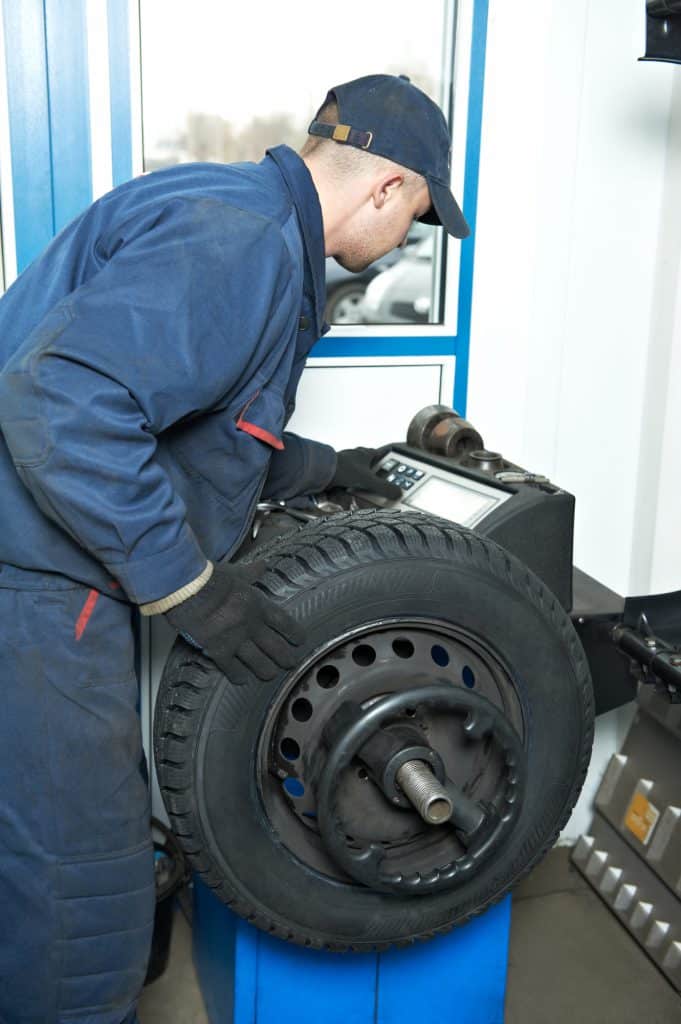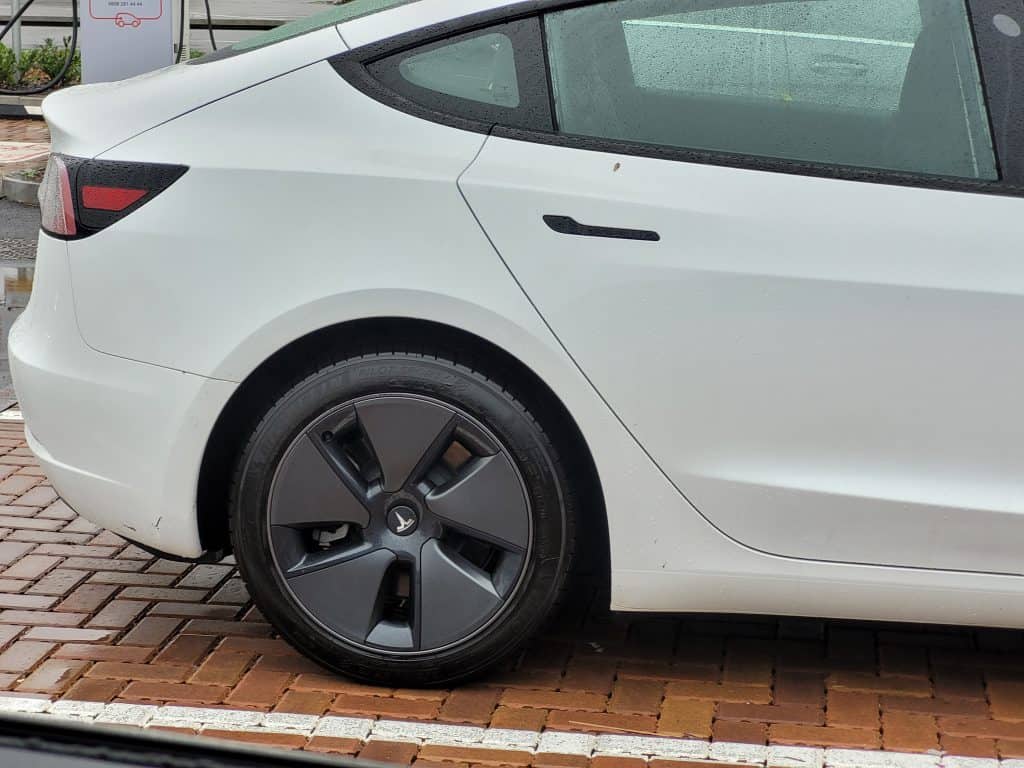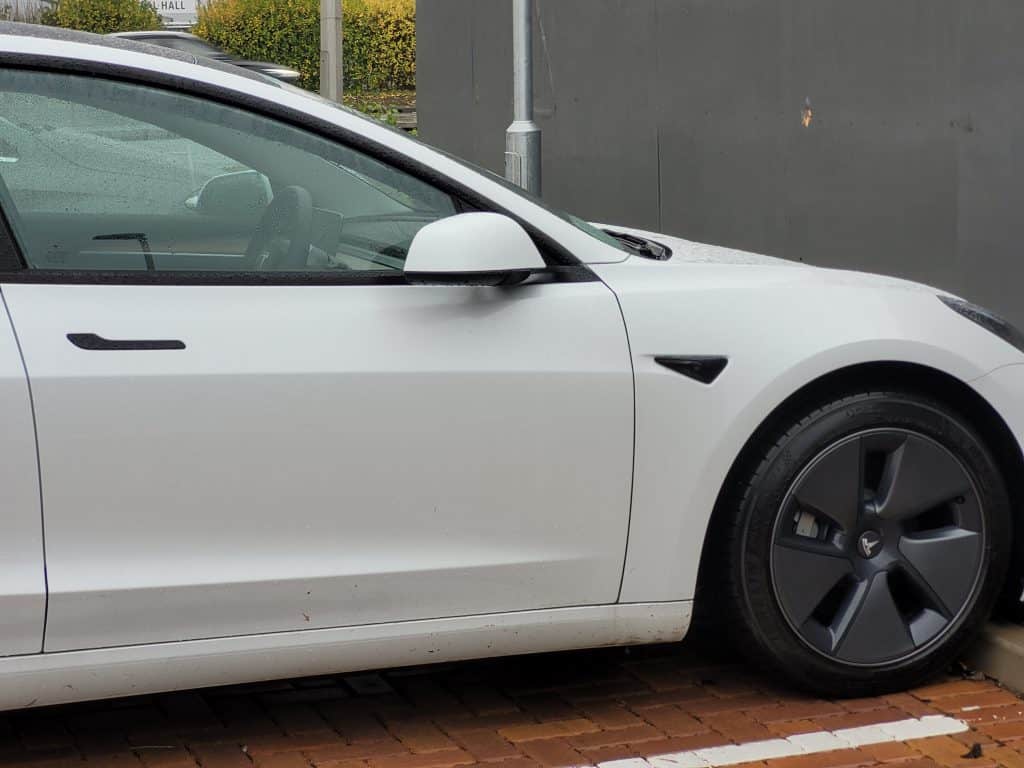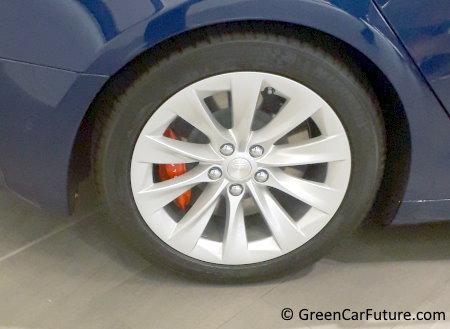In the not-too-distant past, Tesla owners have been asking questions about staggered tires/wheels. Most often they were asking how they might find out if they have staggered wheels or not. This raises a few more questions, of course, namely what exactly are staggered tires, how do they work, are they a good or bad thing, and of course which Teslas have them and which don’t?
All of these questions and others we will try to answer in today’s blog all about Teslas and staggered wheels.
What are Staggered Wheels?

Staggered wheels/tires are commonly referred to in the industry as either a staggered fitment or a staggered application. It means that the tires — and as a result in most cases, the wheels too — are different sizes at the front of the car compared to the rear of the car.
That has likely immediately prompted you to imagine a drag racer or other racing car, right? Well, yes indeed it’s very common for those high-performance racing machines in Formula 1 and other motorsports to have staggered fitments.
A staggered fitment is one commonly used for high-performance RWD vehicles. It has been applied to Porsche models, as well as Chevy Corvettes and many others. Some may even own a car with staggered wheels and not even know it.
Do Teslas Have Staggered Wheels?

If you own a Tesla, you could inspect your tires yourself and see quite clearly if they are a staggered fitment. If they look quite close and you can’t tell, then you could consult your owner’s manual and specifications to check, or ask your Tesla service center to help you confirm it.
But are these the only methods? What if you really need to know. In one online forum, an owner of a 2015 Tesla Model S P90DL with 21” wheels is wondering how he might be able to tell his wheels are staggered without looking. The car was stored at the airport and he wouldn’t have access to it for another week or so, but in the meantime he had to order a new wheel because one was bent.
He then became aware of the staggered wheels problem and started to wonder if his own would be. Some on the forum suggest that if you own a Tesla with a 21-inch tire setup, then your wheels are indeed staggered. Others disagreed with that, pointing to the fact that there are many 21-inch wheel Teslas around that are not staggered.
Another described that buying a Tesla back in 2015 was a “crap-shoot” when it came to getting staggered 21-inch wheels or not, saying that some were staggered and others not and seemingly no one told you which one applied to you in that process.
In 2020, as Tesla fans were eagerly awaiting the arrival of the Model Y, tire supplier tirerack.com seemed to pre-empt people’s guesses about whether these models would come with staggered wheels by putting up replacement tire specifications for the Model Y before it was officially launched.
What the fans found was that the Model Y Long Range model would not have staggered wheels on either the 19-inch or 20-inch wheel layouts. The Model Y Performance model, on the other hand, did get staggered tires, with the front 21-inch wheels getting 255mm tires, and the rear 21-inch wheels getting 275mm tires.

The best way to know if your tires are staggered is to check the wheels yourself. There should be a marked difference of at least an inch or more difference in width. Use a ruler to check if you like. If you have a 21-inch or above wheel setup on a Performance model, then chances are that you do have a staggered fitment. There are even some 20-inch wheel examples.
Here are some common widths used:
- Model S – 21” Turbine – Front 245mm; Rear 265mm
- Model S – 21” Arachnid – Front 245mm; Rear 265mm
- Model X – 20” Slipstream – Front 255mm; Rear 275mm
- Model X – 20” Helix – Front 255mm; Rear 275mm
- Model X – 22” Turbine – Front 265mm; Rear 285mm
Pros and Cons of Staggered Wheels

So we know that a number of Tesla models do indeed have staggered wheels, but not all. None of the Model 3 layouts, for instance, are staggered. But what difference does it make anyway? Is there even any advantage to having a staggered fitment? As it turns out, there is indeed some advantage, as well as some downside. Let’s start with the Pros:
Pro: More Aggressive Looks
When the wheels are only a matter of 20mm in difference, that’s not going to make a massive difference to the aesthetic, but it should be at least noticeable. In more extreme cases, the staggered fitment delivers a really powerful and aggressive look.
When you’re building a 10,000-hp drag racer, it’s quite important that you intimidate the competition in any way possible, and the look created by the staggered wheels is one such method.
Pro: It Aids Acceleration
Wider tires at the rear create more contact with the road. When you have better contact, that means you have better grip. The added traction is exactly what you need when you want to stably and safely launch a car forward at tremendous speed.
Take the Model S Plaid, for instance, capable of going from 0 to 60 in just 1.99 seconds…that’s some serious traction and stability needed for a launch like that.
Pro: It Benefits Driving Dynamics

A number of driving features are improved with the help of larger wheels in the rear. The slight raise given to the vehicle from its larger rear wheels helps the turning radius to be shorter, which means it can maneuver more easily in tighter spaces.
On top of that, the weight distribution also experiences some subtle changes, as well as the center of gravity. Drivers sometimes have to get used to these changes, but given time they tend to find the car easier to manage on tricky roads, delivering better handling and cornering.
Con: Added Costs
When you have staggered tires, you can’t rotate them in the usual way, meaning that in the longer term you likely will spend replacing front and rear tires because you are unable to rotate them as you would a matching set of 4 wheels. The only way to rotate the tires is to swap them straight across on the same axle, which is limiting.
If it also proves that your car needs additional mechanical modifications to make it perform better, then that’s a lot more cost and possibly a voided warranty if you want to get the performance benefit. Of course, on a Tesla the modification element is not an issue since the staggered fitment is standard on some models.
Are Staggered Wheels Better on a Tesla?
The good news about Tesla’s staggered wheels is that they are very well applied. If you were to ask a tire expert about the downsides of staggered wheels, most of them don’t apply to the Tesla because the Tesla models that have them have enough power and torque to make the best of the staggered wheel situation.
On top of that, as we mentioned above, the need for modification makes them a potential problem on some other cars, but again that’s not an issue for Tesla because they come standard.
If you’re driving a more ordinary spec Tesla car or other electric vehicle that doesn’t give you any option for staggered tires, then it’s probably not a good idea to pursue them. At least, you should make inquiries with your service center first to see if it’s even possible or advisable. This is a feature, it would seem, that is best suited to those vehicles in the higher specifications.